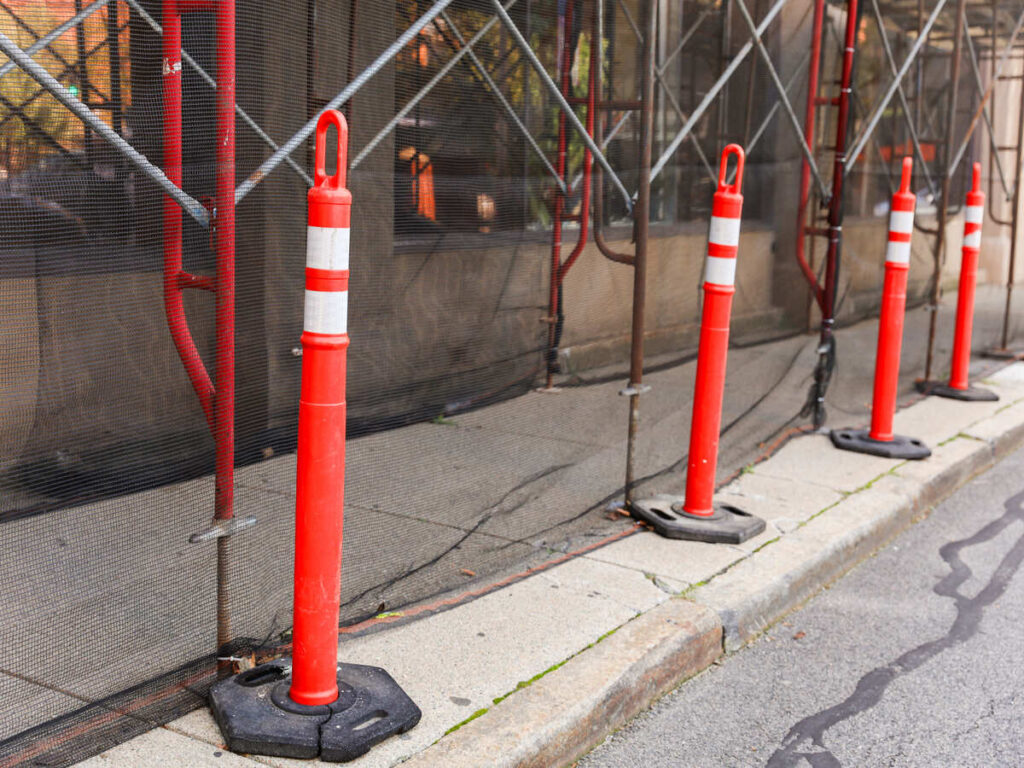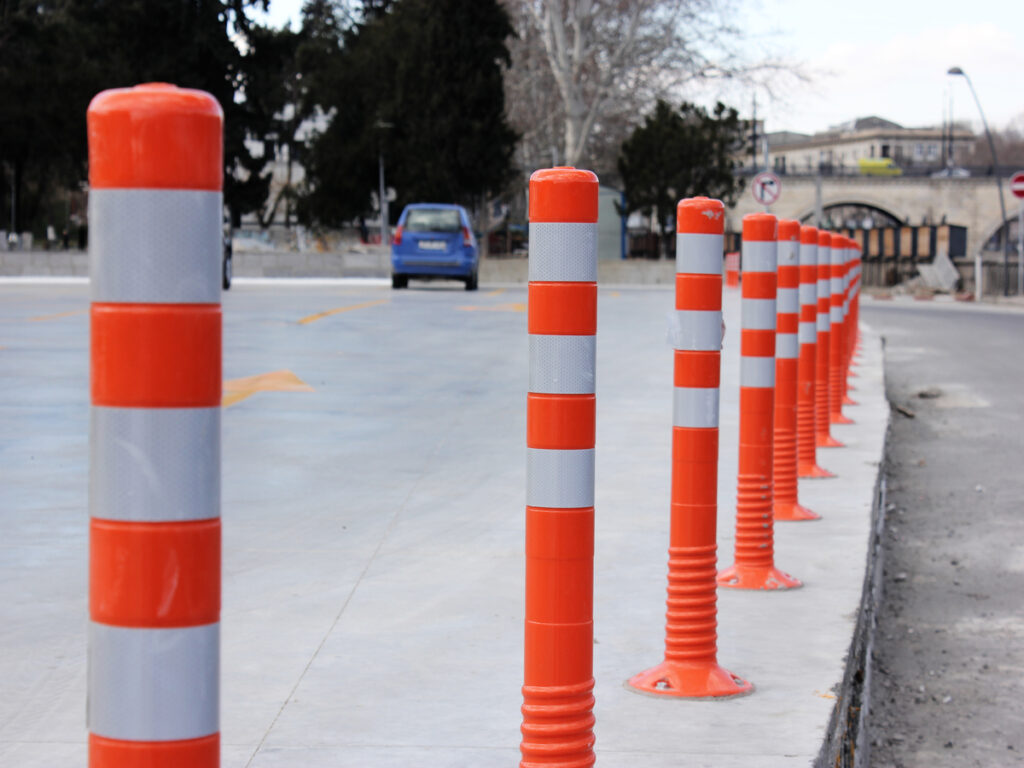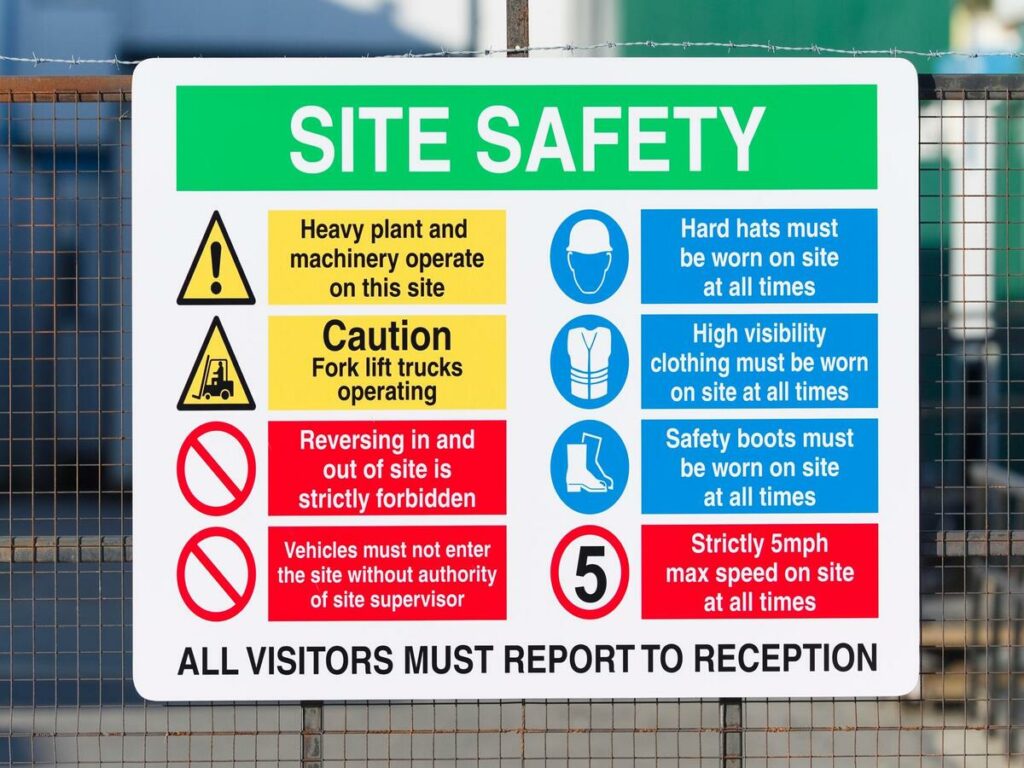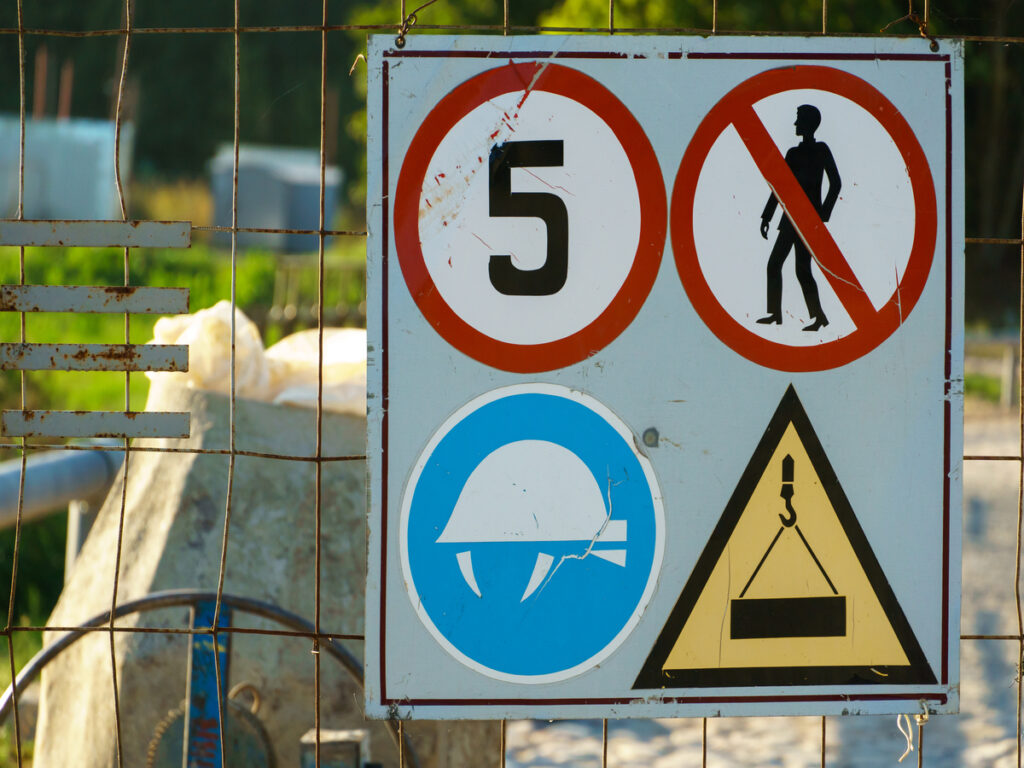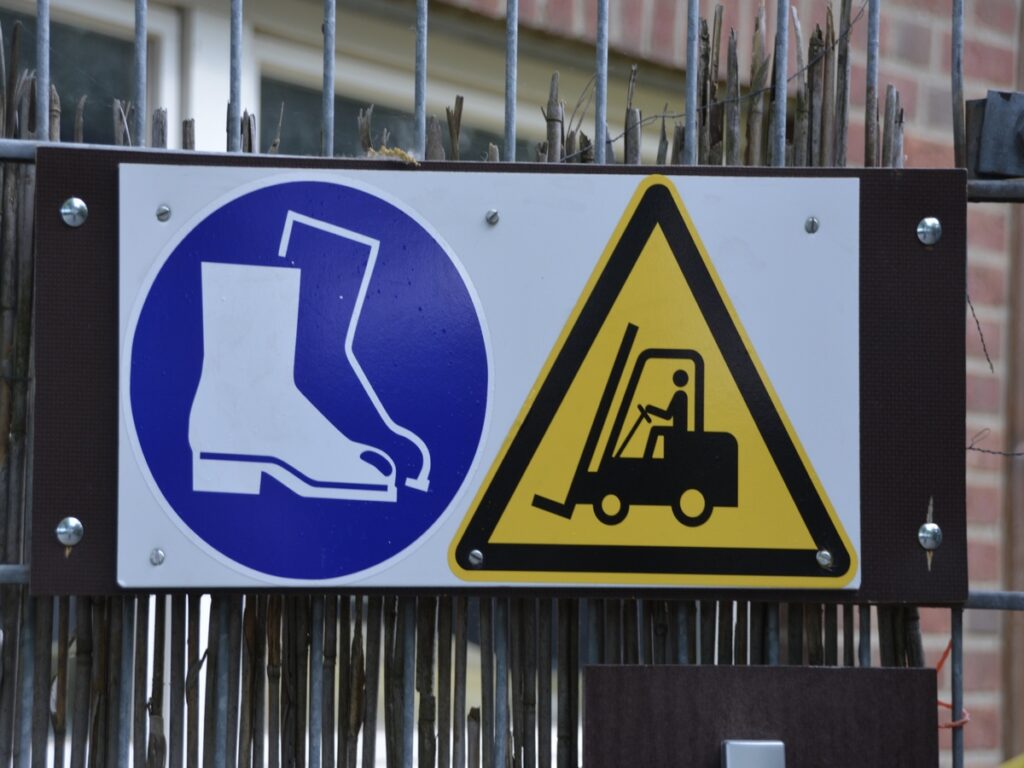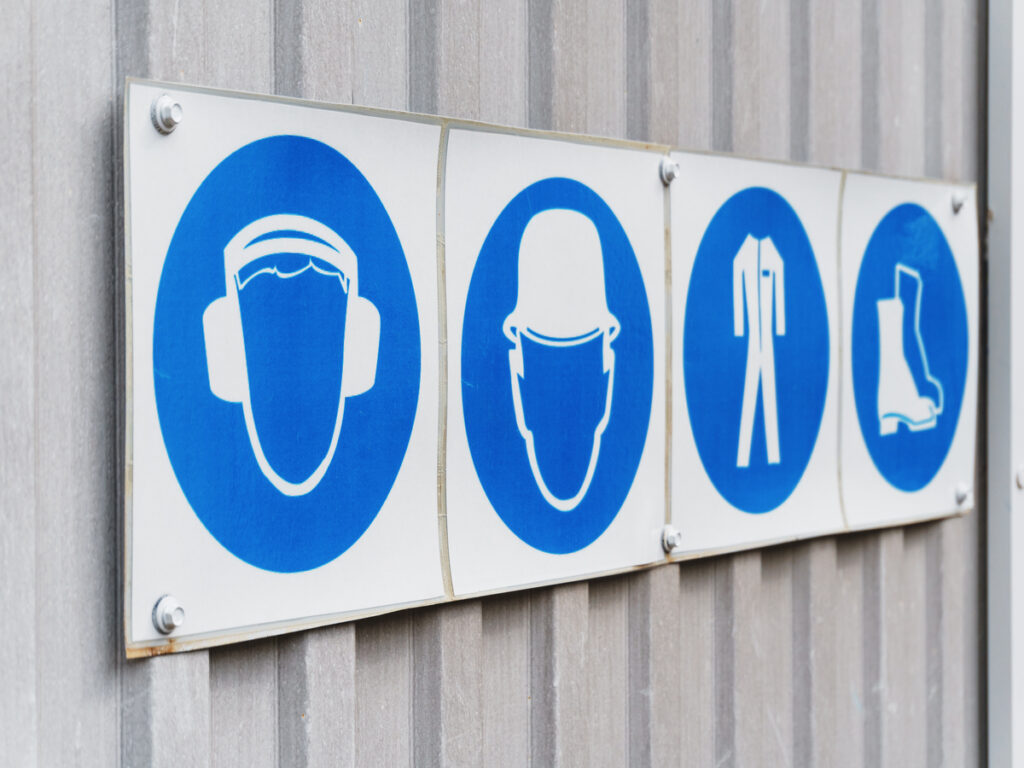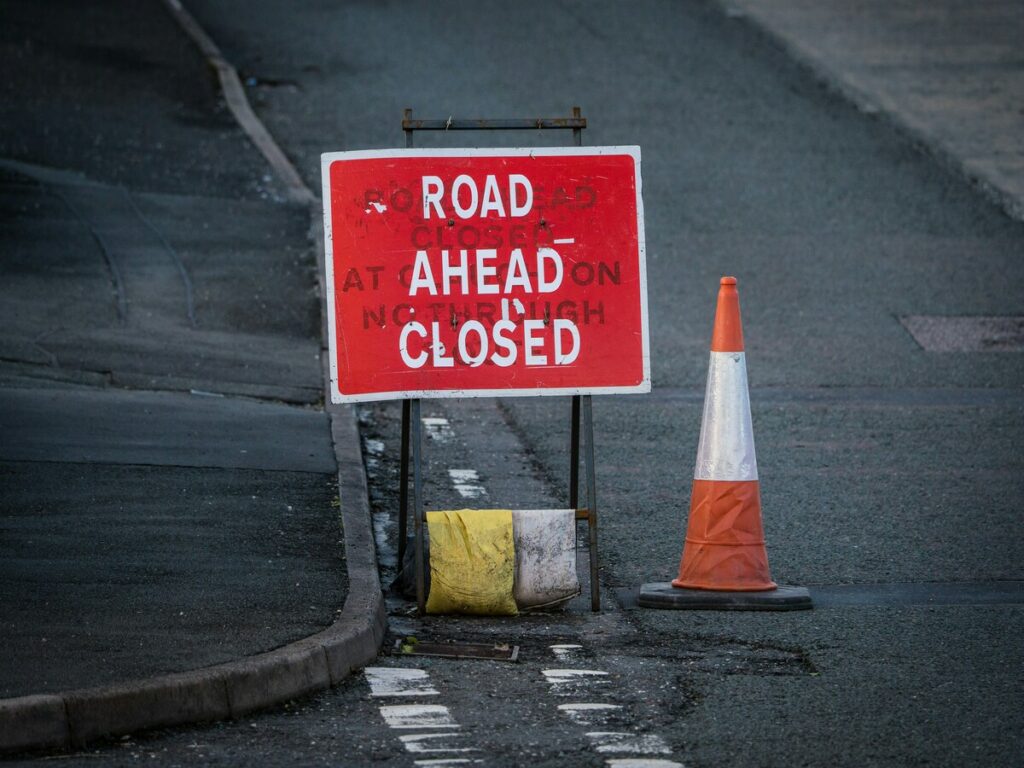
あなたが道路にいるとき, have you ever noticed how 交通コーン そして サイン seem to work like a team? 単なる飾りではなく、みんなの安全を守る重要な役割を果たしています。. コーンが車両を障害物を避けて誘導します, 標識はドライバーに明確な指示を提供します. 一緒に, 標識とコーンは危険を示すことでより安全な環境を作り出します, 車線を分ける, トラフィックの指示. 例えば, コーンは車が制限区域に入るのを防ぐことができます, ドライバーに反応するのに十分な時間を与える. 学校ゾーンで, 標識とコーンはドライバーと歩行者の両方に横断歩道を警告します, エリアを誰にとっても安全にします. コーンと標識はシンプルですが、交通の流れをスムーズにし、命を守るのに強力です。.
Understanding the Roles of Cones and Signs
Traffic cones and signs are like the dynamic duo of road safety. Each plays a unique role, but together, cones and signs create a safer environment for everyone on the road. Let’s break down how signs and cones work.
OptSigns 高品質を提供します 交通コーン そして 交通標識, ensuring that your road safety needs are met with durable and reliable solutions.
トラフィックコーン
Physical barriers and visual cues
Traffic cones are hard to miss. Their bright colors and reflective materials grab your attention, 遠くからでも. They act as physical barriers, guiding vehicles through specific routes and keeping them away from danger zones. You’ll often see them marking areas with hazards like potholes, raised manhole covers, or rough terrain. Their sturdy black bases keep them stable, 風の強い状態でも. The height of the cones varies depending on the speed of the area—shorter cones for slower zones and taller ones for highways. This ensures they’re visible and effective no matter where they’re used.
Common applications in road safety
You’ve probably noticed traffic cones in construction zones or during road maintenance. They divide lanes, direct vehicles around work areas, 労働者を保護します. イベント中, traffic cones help control traffic density, ensuring smooth flow. They’re also used to alert drivers to temporary hazards like stalled vehicles or sharp turns. By marking these risks, cones help prevent accidents and keep everyone safe.
交通標識
Clear instructions and warnings
交通標識 are your go-to for clear directions. They reduce confusion by providing essential information like speed limits, 駐車ルール, or warnings about upcoming hazards. Reflective materials and flashing lights make them easy to spot, even in poor visibility. This ensures you have enough time to react and adjust your driving.
Types of traffic signs and their purposes
Signs come in three main types: 規制, 警告, そして ガイド サイン. 規制標識, ストップサインや速度制限のような, enforce traffic laws. Warning signs alert you to potential dangers, such as sharp curves or slippery roads. Guide signs help you navigate, showing directions or distances to your destination.
How Cones and Signs Work Together
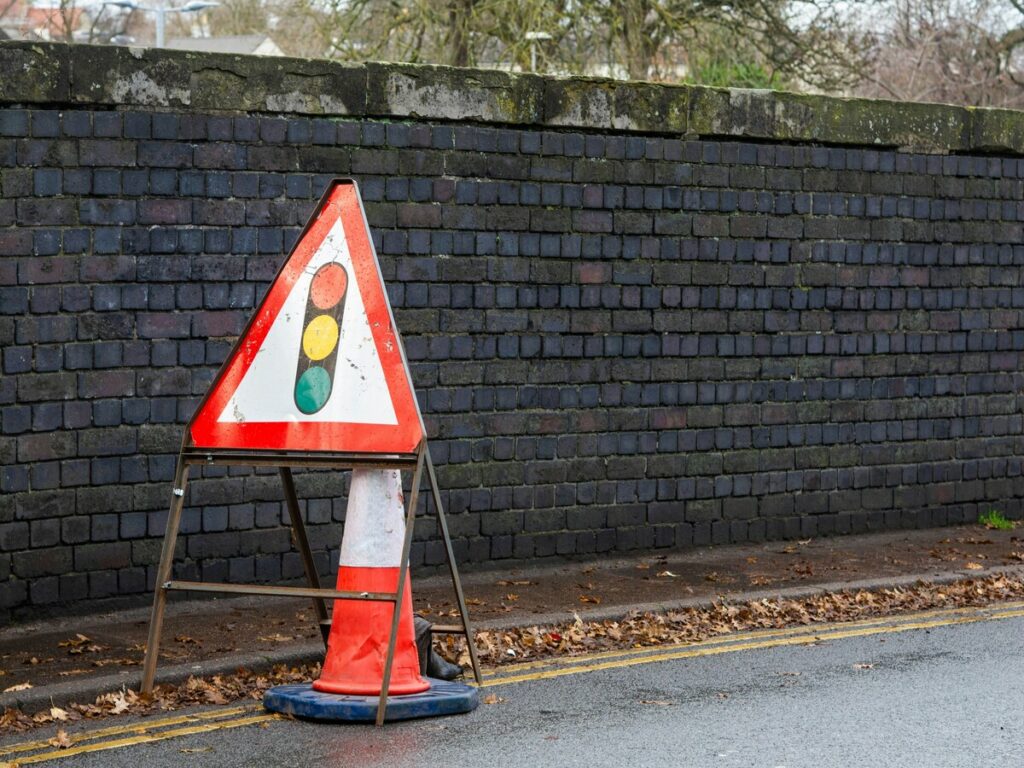
交通の流れを導く
Directing vehicles in construction zones
When you drive through a construction zone, you’ve probably noticed how cones and signs work together to guide you safely. Plastic construction cones create clear lanes, channeling vehicles away from roadwork. Signs warn you about lane closures or reduced speed limits ahead, giving you time to adjust. 例えば:
- 高速道路で, plastic construction cones direct traffic around construction areas, reducing congestion and keeping workers safe.
- During road maintenance, plastic construction cones close off lanes while signs alert drivers to upcoming changes, スムーズなトラフィックの流れを確保します.
- 都市で, plastic construction cones create temporary pedestrian pathways, keeping both walkers and drivers safe.
This teamwork between highway safety products ensures everyone knows where to go, 混oticとした状況でも.
Managing traffic during events or emergencies
Events and emergencies can disrupt normal traffic patterns. Cones and signs step in to restore order. 大規模なイベントで, cones divide parking areas and direct vehicles to exits, while signs provide instructions like “No Parking” or “Detour Ahead.” In emergencies, cones block off dangerous areas, and signs guide drivers to alternate routes. 一緒に, they keep traffic moving and prevent confusion.
Marking Hazards
Highlighting roadwork and damaged areas
Cones and signs are your first line of defense against road hazards. Bright orange traffic cones mark potholes, 不均一な表面, or damaged sections of the road. Signs warn you about these dangers in advance, so you can slow down or change lanes. This combination minimizes the risk of accidents.
Warning drivers of temporary changes
Temporary changes, like new traffic patterns or detours, can catch drivers off guard. Cones outline the new routes, while signs explain what’s happening. This pairing ensures you’re never left guessing, even in unfamiliar situations.
可視性の向上
Use of reflective materials for night-time safety
夜の運転は難しい場合があります, but cones and signs with reflective materials make it safer. Fluorescent orange signs and cones stand out, 低光でも. Reflective sheeting on cones bounces your headlights back, making them brighter and easier to see. 高強度のプリズムシート works best in high-traffic areas, その間 ダイヤモンドグレードシート offers maximum visibility on highways. These materials help you spot changes in traffic patterns, 事故の可能性を減らす.
Strategic placement for maximum visibility
Placement matters just as much as visibility. Cones and signs are strategically positioned to catch your attention without overwhelming you. 例えば, cones are spaced evenly to guide you smoothly through detours, while signs are placed at eye level for easy reading. This thoughtful arrangement ensures you stay informed and safe.
Scenarios Where Cones and Signs Are Used Together
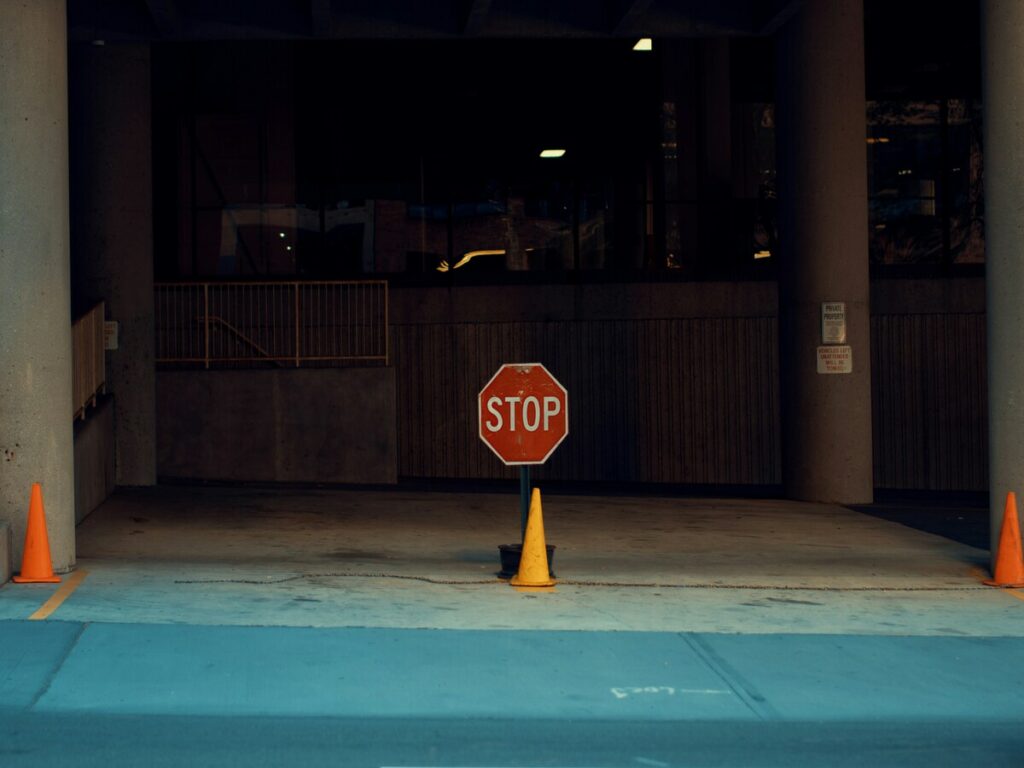
建設ゾーン
Protecting workers and equipment
建設ゾーンで, cones and signs act as a shield for workers and equipment. Bright orange cones create a visible barrier, keeping vehicles at a safe distance from work areas. Signs warn drivers about lane closures or reduced speed limits, giving them time to adjust. 例えば:
- 高速道路で, plastic construction cones channel traffic around roadwork, 夜間の操作中の安全性を確保します.
- 都市部, plastic construction cones establish pedestrian pathways, protecting both workers and passersby.
- ユーティリティのメンテナンス中, plastic construction cones cordon off hazardous zones, 事故の防止.
This highway safety products teamwork ensures everyone stays safe, whether you’re driving, 歩く, or working.
Guiding vehicles through detours
Navigating detours can be tricky, but cones and signs make it easier. Cones outline temporary lanes, while signs provide clear directions like “先に迂回” または “左にマージします。” This combination keeps traffic flowing smoothly, 混oticとした状況でも. 例えば, during road maintenance, cones close off lanes while signs guide you to alternate routes. 一緒に, they reduce confusion and keep you on track.
学校のゾーン
Ensuring safety during drop-off and pick-up times
School zones can get hectic, 特にドロップオフとピックアップ時に. Cones and signs work together to maintain order and safety. Cones create designated drop-off lanes, keeping traffic organized. 速度制限標識, often paired with flashing beacons, remind drivers to slow down. Crosswalks marked with pedestrian signals guide children safely across the street. These safety product measures ensure a safer environment for everyone.
Alerting drivers to reduced speed limits
Drivers need to know when they’re entering a school zone. Reflective speed limit signs make this clear, 夜や悪天候でも. 点滅するビーコン draw attention to reduced speed limits during school hours. Cones placed strategically near crosswalks further emphasize the need for caution. This setup helps drivers stay alert and compliant.
緊急事態
Managing traffic during accidents
Accidents can disrupt traffic, but cones and signs help restore order. Cones block off dangerous areas, while signs guide drivers to alternate routes. 例えば, 折りたたみ可能なトラフィックコーン can alert other motorists when a vehicle is stranded. Placing cones six feet in front and two car lengths behind your car ensures visibility and safety.
Creating safe zones for emergency responders
Emergency responders need space to work efficiently. Cones create safe perimeters around accident scenes, keeping other vehicles at bay. Signs direct traffic away from the area, reducing congestion. This setup allows responders to focus on their tasks without unnecessary risks.
Benefits of Using Cones and Signs Together
事故の削減
Preventing collisions in high-risk areas
You’ve probably noticed how chaotic high-risk areas like construction zones or accident sites can get. Cones and signs work together to prevent collisions by creating clear boundaries and providing warnings. Bright plastic construction cones guide vehicles away from hazards, while signs alert you to lane closures or reduced speed limits. 例えば, plastic construction cones can mark off damaged sections of the road, and signs warn you to slow down. This cone signs combination gives you enough time to react, 事故の可能性を減らす.
Minimizing confusion for drivers
Confusion on the road often leads to mistakes. Cones and orange signs on the road eliminate guesswork by offering clear instructions. Cones outline temporary lanes, while signs explain what’s happening, like detours or road closures. When you know exactly where to go, you’re less likely to make sudden moves that could cause accidents. This cone signs teamwork keeps everyone safer.
トラフィックフローの改善
Avoiding bottlenecks in construction zones
Construction zones can slow everything down, but cones and signs keep traffic moving. Cones create clear lanes, guiding vehicles around roadwork. Signs warn you about upcoming changes, like merging lanes or reduced speeds. 例えば:
- 高速道路で, cones channel traffic around construction areas, reducing congestion.
- In urban zones, cones establish pedestrian pathways, keeping walkers and drivers safe.
- ユーティリティのメンテナンス中, cones cordon off hazardous areas, preventing accidents and ensuring smooth flow.
This setup ensures you spend less time stuck in traffic.
Ensuring smooth navigation during events
Events can create traffic chaos, but cones and signs bring order. Cones direct vehicles to parking areas, while signs provide instructions like “No Parking” or “Exit Here.” This pairing minimizes confusion and keeps traffic flowing.
Protecting Workers and Pedestrians
Creating safe workspaces
Workers in construction zones face constant risks, but safety products create a protective barrier. Cones mark off work areas, keeping vehicles at a safe distance. Signs warn drivers about lane closures or reduced speeds, giving them time to adjust. This cone signs setup ensures workers can focus on their tasks without worrying about passing traffic.
Shielding pedestrians from hazards
Pedestrians are especially vulnerable in busy areas. Cones and signs work together to keep them safe. Cones establish temporary walkways, guiding pedestrians away from danger zones. Signs alert drivers to crosswalks or pedestrian activity, encouraging caution. This cone signs teamwork creates a safer environment for everyone, whether you’re walking or driving.
Best Practices for Deploying Cones and Signs
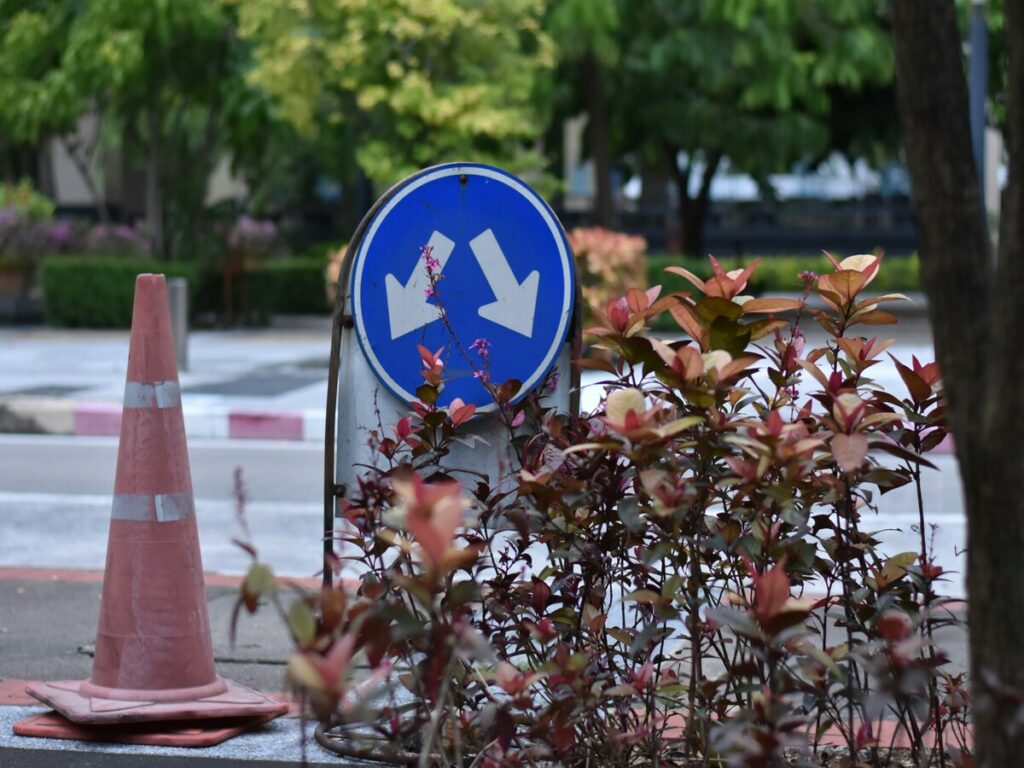
適切な配置
Ensuring visibility and clarity
When placing traffic safety cones and safety signs, visibility is key. You want drivers to spot them from a distance, especially in high-speed areas. Use reflective materials on both cones and signs to make them stand out, 夜でも. Position signs at eye level so drivers can read them without straining. Space cones evenly to create clear lanes or boundaries. 例えば, in a construction zone, place traffic safety cones in a straight line to guide vehicles smoothly. Always think about how the placement will look from a driver’s perspective.
ヒント: Test the visibility of signs and cones by walking or driving through the area yourself. This helps you spot any blind spots or unclear arrangements.
Avoiding overcrowding of cones and signs
Too many security cones or traffic signs can confuse drivers instead of helping them. Keep it simple. Use only the number of cones needed to mark the area effectively. Avoid placing multiple signs too close together. Drivers need time to read and process each one. 例えば, if you’re marking a detour, one clear sign with an arrow works better than several signs with too much information. きれい, uncluttered setup ensures clarity and safety. OPTsigns provides clear and concise signage, ensuring a clean, uncluttered setup that guarantees clarity and safety.
定期的なメンテナンス
Checking for wear and tear
Damaged cones and faded signs lose their effectiveness. Inspect them regularly for cracks, へこみ, or peeling reflective material. Replace any that show signs of wear. 例えば, cones with faded colors might not catch a driver’s attention, 特に暗い光で. Regular checks ensure your safety cone signs stay in top condition.
Replacing damaged or faded cones and signs
Don’t wait until a cone tips over or a sign becomes unreadable. Keep spare signs and cones on hand for quick replacements. This is especially important in areas with heavy traffic or harsh weather. A well-maintained setup not only looks professional but also keeps everyone safe.
注記: Reflective materials can degrade over time. Check safety cone signs under different lighting conditions to ensure safety cone signs still work effectively.
Adapting to Specific Scenarios
Customizing placement for unique road conditions
Every road is different. Adjust your setup based on the environment. On narrow streets, use smaller cones to avoid blocking too much space. In areas with sharp curves, place signs earlier to give drivers more time to react. 例えば, in a hilly area, position cones closer together to guide vehicles safely through steep sections. Tailoring your approach to the situation makes a big difference.
Using additional tools like barriers or lights
Sometimes traffic cones need extra help. In low-light areas, add flashing lights to cones for better visibility. Use barriers for high-risk zones like steep drop-offs or busy intersections. 例えば, 夜間の道路工事中, combine cones with portable lights to ensure drivers see the setup clearly. These extra tools enhance safety and make your setup more effective.
ヒントの場合: Always evaluate the specific needs of the location. The right combination of tools can turn a tricky situation into a well-managed one.
Traffic cones and signs aren’t just tools; they’re lifesavers. 一緒に, safety cone signs guide you through construction zones, 歩行者を保護します, トラフィックをスムーズに流し続けます. Studies show cones reduce accidents by channeling vehicles safely around hazards, while signs provide the warnings you need to stay alert. Whether it’s a busy highway or a quiet street, safety cone signs teamwork makes roads safer for everyone. But here’s the catch—proper placement and regular maintenance are key. When you see safety products working together, you’re witnessing road safety in action. それで, let’s keep safety cone signs in top shape to protect lives every day.

